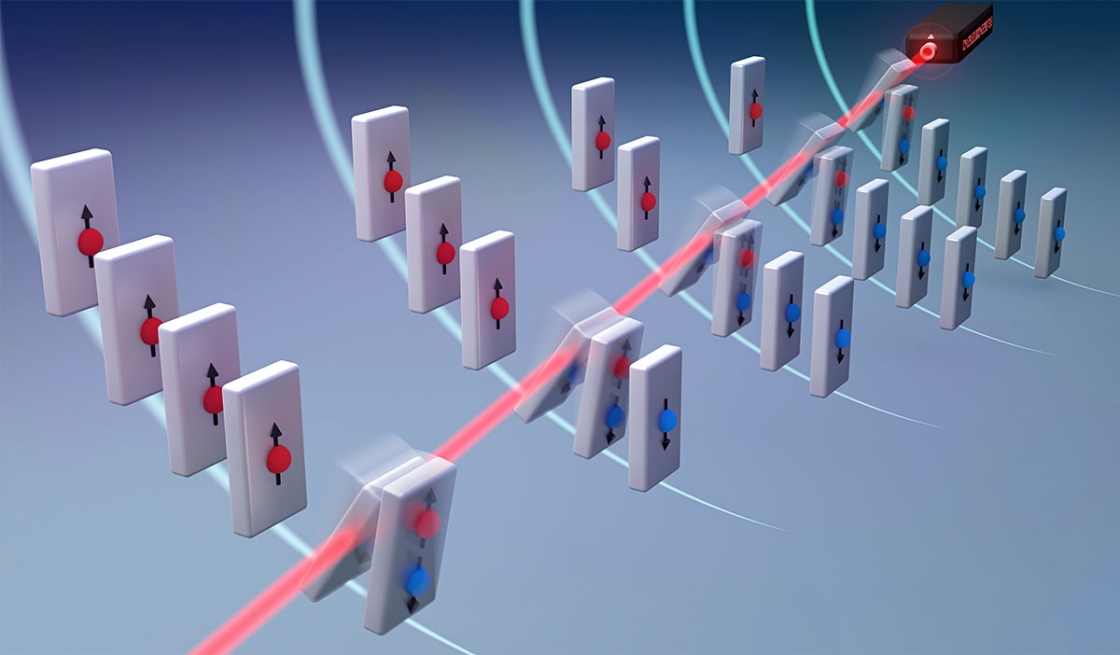Schrödinger’s Cat is one of the most famous thought experiments in quantum mechanics. Physicist Erwin Schrödinger’s thought experiment goes like this: suppose you have a cat sealed in a box with a contraption that may or may not go off to release a poison. The only way to confirm the cat’s fate is to open the box. Until the box is opened, the cat is both alive and dead.
Being in a superposition of two states at a time is an intrinsic property of quantum objects like atoms which, for example, can exist in two opposing spin states simultaneously: spin up and spin down. That makes superposition states really useful for physicists.
Quantum mechanics is bound by uncertainty; you can know with great certainty an object’s position but not its momentum, and vice versa. Atoms are also intrinsically fuzzy objects. You cannot know with full certainty which specific direction its spin is pointing. However, when arrays of atoms become entangled—like in a cat state—they can cancel out each other’s quantum noise and become less fuzzy.
“Cat states have been one of the states that reaches this quantum mechanical bound. You cannot be more precise, in principle, than a cat state,” JILA Fellow Ana Maria Rey explained.
But preparing cat states has been extremely difficult, especially with a large number of atoms. NIST’s Dave Wineland gained renown for generating a cat state in six atoms—a record number in 2005.
Mikhail Mamaev, a graduate student in the Rey Theory Group, developed a novel scheme to prepare a large number of atoms in cat states using the strontium clock in the Ye Lab at JILA. Not only can this new method prepare a large number of atoms in a cat state, they can be measured easily. These findings were published in Physical Review Letters on June 16.
“He starts with something that is very classical, and then step by step, he is converting this classical object into a highly entangled object using the exquisite resolution of the clock,” Rey said.




